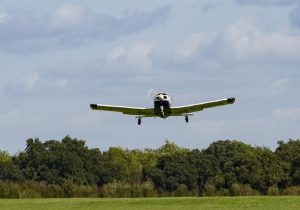
There are other types of airplanes besides narrow body and wide body. Short takeoff and landing (STOL), for instance, is an alternative type. Most STOL airplanes are still classified as narrow-body airplanes. But STOL airplanes are designed specifically for use on short runways
Overview of STOL Airplanes
A STOL airplane is a type of airplane that’s able to perform short takeoffs and landings. All airplanes need at least some space to take off and land. STOL airplanes, though, require less space than their counterparts.
Some STOL airplanes can perform short takeoffs and landings on traditional paved runways. Others can perform short takeoffs and landings on the water. Regardless, they don’t need a lot of space. An airplane is classified as a STOL airplane if it’s able to perform short takeoffs and landings.
Most STOL airplanes can perform takeoffs and landings with just 500 feet of space. In comparison, commercial airplanes may require 5,000 to 7,500 feet of space. STOL airplanes feature several characteristics that allow them to take off and land with less space.
How STOL Airplanes Work
You may notice that STOL airplanes have longer wings than traditional airplanes. Wings, of course, produce lift — and airplanes need lift to take off. With longer wings than traditional airplanes, STOL airplanes produce more lift, allowing them to take off from otherwise short runways and bodies of water.
STOL airplanes have a lower stall speed than traditional airplanes as well. Stall speed is the minimum speed at which an airplane must fly to prevent stalling. If an airplane drops below its stall speed, it will fail to produce a sufficient amount of lift. And without enough lift, the airplane will fall from the sky.
A common characteristic of STOL airplanes is a low stall speed. A low stall speed allows them to perform takeoffs and landings with less space than that of traditional airplanes.
When viewing a STOL airplane, you may notice that it has curved wingtips. Wingtips are the outermost edges on an airplane’s wings. The shape of an airplane’s wingtips can affect its drag, speed and fuel efficiency. STOL airplanes typically have curved wingtips.
In Conclusion
Not all airplanes require thousands of feet of space to perform takeoffs and landings. STOL airplanes are designed specifically for shorter takeoffs and landings. Most of them only require up to 500 feet of space. They leverage long wings, a low stall speed and curved wingtips to perform these exceptionally short takeoffs and landings.



